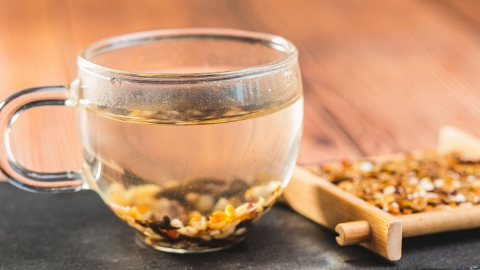How to manage dampness in the body and what to eat
Generally, methods for managing dampness in the body include exercise to expel dampness, environmental moisture prevention, moxibustion to strengthen the spleen, regular作息 habits, and emotional regulation. Suitable foods include red beans, coix seed, poria, winter melon, and yam. Long-term adherence is required to improve body constitution. Detailed analysis is as follows:

I. Management Methods
1. Exercise to expel dampness: Engage in brisk walking, jogging, yoga, or other exercises 3–5 times per week, each session lasting about 30 minutes. Exercise promotes blood circulation, expels dampness through sweating, and enhances the spleen and stomach's transformation and transportation functions, thereby reducing dampness formation.
2. Environmental moisture prevention: Keep living spaces well-ventilated and dry. Close windows and doors during rainy weather, and use dehumidifiers or desiccants to absorb moisture. Frequently air out clothes and bedding to avoid prolonged exposure to damp environments and reduce external dampness invasion.
3. Moxibustion to strengthen the spleen: Apply moxibustion to acupoints such as Zusanli (ST36), Yinlingquan (SP9), and Zhongwan (CV12), 2–3 times per week. The warming effect of moxibustion helps unblock meridians, strengthen the spleen, and eliminate dampness, enhancing the internal organs' ability to transform and transport dampness, particularly suitable for individuals with cold-damp constitutions.
4. Regular作息 habits: Develop habits of going to bed early and waking up early, avoid staying up late, and ensure 7–8 hours of sleep. Nighttime is a critical period for organ repair; regular作息 supports normal spleen and kidney function, aiding dampness metabolism and elimination.
5. Emotional regulation: Release stress through activities such as listening to music or walking, and avoid prolonged anxiety or irritability. Negative emotions can impair spleen function, hindering dampness transformation. Maintaining a cheerful mood can assist in eliminating dampness.
II. Suitable Foods
1. Red beans: Neutral in nature with a sweet taste, red beans can strengthen the spleen, eliminate dampness, nourish blood, and support heart health. They can be cooked as porridge or soup, helping expel dampness from the body and alleviate symptoms of heaviness in the limbs.
2. Coix seed: Slightly cold in nature with a bland, sweet taste, coix seed promotes diuresis, removes dampness, strengthens the spleen, and stops diarrhea. When cooked with red beans, its dampness-removing effect is enhanced. It should be stir-fried beforehand to reduce its cold nature.
3. Poria: Neutral in nature with a sweet taste, poria strengthens the spleen, invigorates qi, dries dampness, and promotes diuresis. It can be ground into powder and added to porridge or brewed in water, helping regulate spleen function and reduce dampness accumulation.
4. Winter melon: Slightly cold in nature with a bland, sweet taste, winter melon clears heat, promotes diuresis, reduces swelling, and detoxifies. It can be stir-fried or cooked into soup, promoting urination and assisting in dampness elimination.
5. Yam: Neutral in nature with a sweet taste, yam benefits the spleen and stomach, generates body fluids, and nourishes the lungs. It can be steamed or cooked into porridge, enhancing the spleen's transformation and transportation function, thereby reducing dampness formation at its source.
Maintaining a balanced diet and avoiding overeating are important to support dampness-removing effects.









